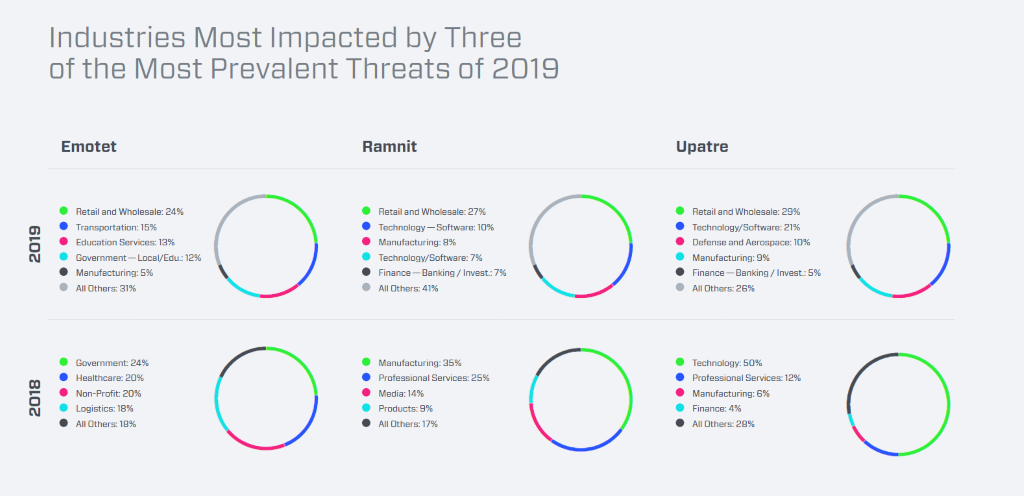Whether we like it or not, digital transformation is here to stay and is good for business, this shift is also creating greater urgency to bridge the cybersecurity gap between Information Technology (IT) and Operational Technology (OT).
Our partners Cylance have a global presence operating within both the OT and IT space, with strong presence within Government, Manufacturing as well as Finance and Technology sectors. Claroty also has a global presence in 15 verticals throughout the globe and focus solely on the OT market.
Both of these reports provide insight and understanding to the ever-changing landscape, identifying the threats and risks that are present from operations to the enterprise, providing metrics that allows you to review the risks that are present within both technology space per vertical and apportioning the perceived and actual risks to both, based on your own risk profile.
Summary of Claroty Global State of Industrial Cyber Security for 2020
From the perspective of IT security practitioners, 62% globally thought that their plants were properly safeguarded, while 74% are more concerned about attacks on infrastructure, against 26% who saw the enterprise as the biggest risk.
Looking into most vulnerable verticals, these were rated as 21% Gas and Oil, 45% Power, 12% Chemical, 12% Transportation 6% Water 4%.
Given the option, which sector would security professionals would prefer to work, showed 76% favoured the Enterprise while only 24% considered OT. Perhaps one reason for this is respondents widely held belief that industrial cybersecurity is not the responsibility of the private sector which may be true in other countries but not here the UK.
When asked whose job is it to protect an organization’s industrial networks, the response was 80% IT Security Professional, 19% OT manager and 1% other. The 25+ year gap between IT security and OT security may be to blame here. Most OT networks have been in place for decades, yet lack even basic security defences and telemetry that allow security teams to see and monitor these environments, making attacks extremely difficult to detect and mitigate.
There is still a divide between IT and OT and a somewhat hesitance for these two teams to integrate. Digital transformation will certainly be the common ground that brings them together for many organisations. The change is likely to be driven through cost efficiencies above and beyond security as the key driver.
Read the full report here.
Summary of Cylance 2020 Threat Report
BlackBerry Cylance 2020 Threat Report contains a broad range of topics vital to the interests of businesses, Governments, and end-users. Threat Report examines 2019’s major security breaches and considers recent advancements that may prevent past mistakes from repeating.
This report takes a detailed look at the threats and risks, including the prevalent threat actors and the malware in use, including indicating the risks for each vertical and operating system. Blackberry Cylance takes a reflective view on last years report as well as a forward view and predictions. Reading this reports year on year provides trust in predictions and insight into to future risks and events.
A growing trend we are seeing is the use of ransomware in targeted attacks. This trend first gained widespread public attention with the outbreak of WannaCry (2017). After a brief period of decline, ransomware has come back with a vengeance and is not only targeting IT systems but increasingly OT.
There have been improvements in impact to cyber threats to Government and Healthcare who are investing heavily in security and threat prevention, however there is an increasing risk to retail and wholesale as well as increases in infections to manufacturing.
Read the full report here.
#solutionspt #otsecurity #otcybersecurity


